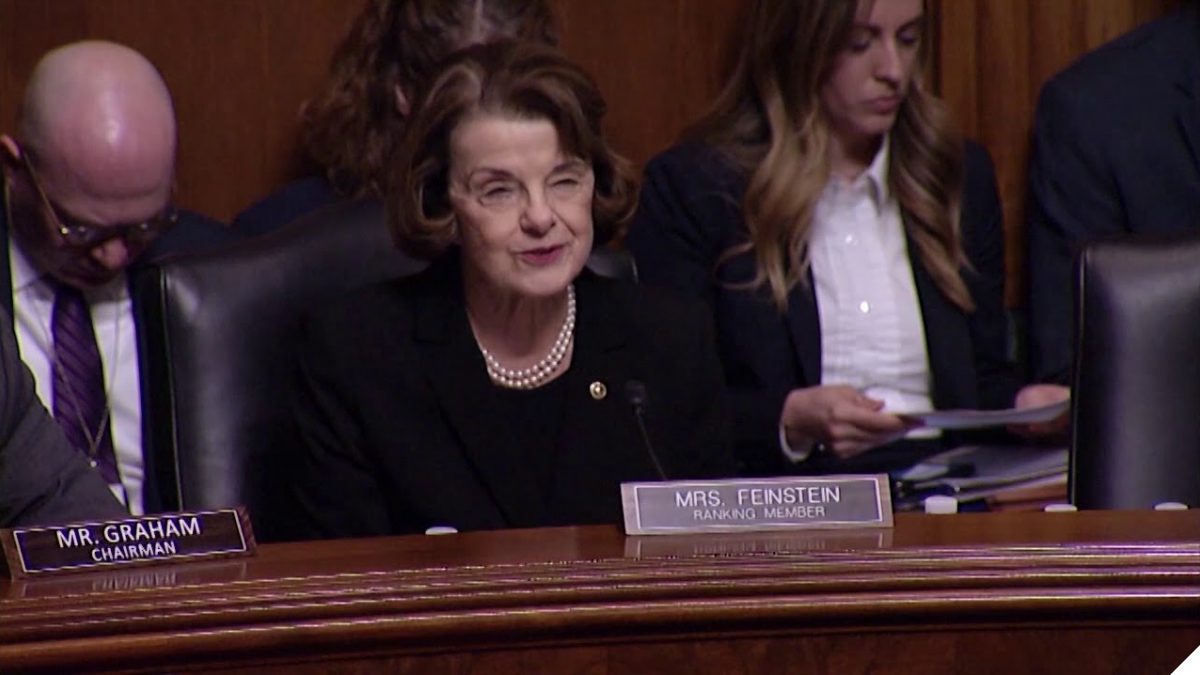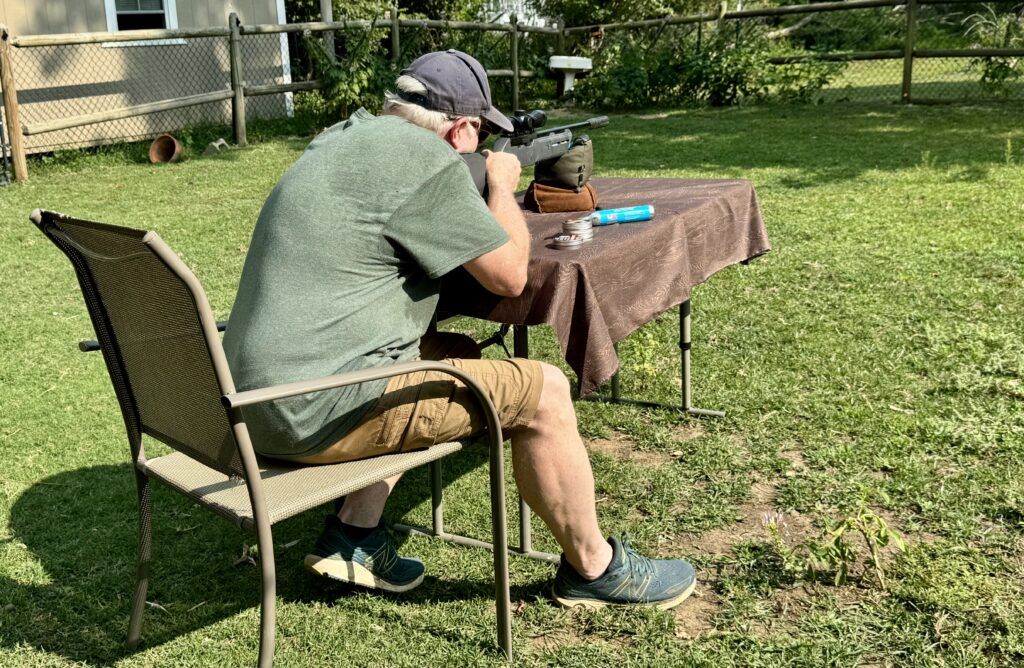The Foundation for Economic Education has a 2019 post that has been seeing a great deal of traffic again.
Why?
It is still relevant. With HR 1808 set for a committee meeting today, Wednesday, July 20th, we need to look at why they’re continuing to push things that don’t work, never have, and never will.
Advertisement — Continue Reading Below
Hint: It’s political clout. Not safety, just political “We tried” *sad emoji* points to use for the midterms.
The studies, data, and examination of the available evidence by scholars suggest that assault weapon bans or buybacks will have little if any effect on rates of violent crime and gun violence.
Mass shootings are unconscionable acts of violence and are the most acutely disturbing form of gun violence. In the wake of such tragedies, many gun control advocates lambast gun rights supporters for allowing “weapons of war” onto the streets of America and not supporting “responsible gun reform.”
The measures put forth are usually either a ban and/or mandatory buyback of “assault weapons,” most of which are more accurately known as semi-automatic rifles. (“Assault weapon” is a vague term that varies state to state and can include common pistols and shotguns depending out other attachable accessories.)
Advertisement — Continue Reading Below
While these initiatives are “common sense” to advocates, if one takes the time to examine the data and evidence, it becomes abundantly clear that gun control in this form will do little to reduce gun violence.
The opening commentary is strong in its outline of the problem. An extreme instance of shocking violence, a mass shooting, triggers very visceral human responses. Those responses are not tempered in logic. Those responses do not solve the problem, nor improve any resultants of humanity’s use of violence as a tool and currency.
These people, wilfully in many instances, misunderstand violence and then scream about their commonsensical solutions for the thing they are fundamentally and wilfully misunderstanding.
Advertisement — Continue Reading Below
Yeah, we can listen to you but we are under no obligation to take you seriously.
Back to FEE
1. Mass shootings with assault weapons constitute a fraction of a percent of gun violence

Advertisement — Continue Reading Below
Mother Jones’s database of mass shootings, defined as shootings involving three or more fatalities, shows that between 2007 and 2017, there were 495 people murdered in such events. When breaking down those shootings by the weapons involved, it is revealed that around half of those victims (253) were murdered by a perpetrator with an assault weapon (AW), such as an AR-15.
In the years since, yes, semi-auto rifles and rifle styled handguns have shown up in more slayings. But those rates are consistent with their record smashing increased market share, increases in pop culture popularity, lower costs for the entry level items, and a full two decades of GWOT influence on the markets.
Even after all of that, handguns remain the tool of choice for the vast majority of lethal criminal violence and remain very common among mass shooters. Just because the rifles are the ones that make headlines doesn’t equate to a proper appreciation for their theat value.
Advertisement — Continue Reading Below
Over the same timeframe, FBI annual crime reports show that there were 150,352 homicides in total, of which 103,901 involved firearms. This means that mass shootings involving AWs constitute 0.17 percent and 0.24 percent of all homicides and firearm homicides, respectively.
To further illuminate the relative infrequency of mass shootings with “assault weapons,” consider the fact that in 2017, some 1,590 people were murdered using knives or sharp instruments.
Over the last five years, 261 people were murdered with AWs in mass shootings (an average rate of 52 murders annually.) At such a rate, it would take over 30 years of mass shootings with AWs to produce the same number of deaths as one year’s worth of knife murders. (It would take 135 years’ worth of mass shootings with AWs to produce the 7,032 deaths that handgun homicides did in 2017.)
Advertisement — Continue Reading Below
Consequently, even a completely effective ban/buyback of AWs would have an incredibly small impact on rates of homicide and gun violence, and then there is always the probability that people intent on committing mass violence will substitute AWs with other available firearms or methods of destruction (such as homemade explosives.)
I’m glad spaces are acknowledging that if we don’t remove motive then removing one convenient method from a highly motivated violent individual or group does diddly and squat in equal portions to stop the violence.
2. Studies find no evidence assault weapon bans reduce homicide rates
There are theoretical reasons to doubt the effectiveness of a ban or buyback of assault weapons, but it also doesn’t help that real-world evidence suggests these measures fail to produce reductions in gun violence.
Advertisement — Continue Reading Below
Between 1994 and 2004, the federal government banned the manufacture, sale, or transfer of assault weapons and large-capacity magazines. A subsequent Department of Justice study found no evidence that the ban had had any effect on gun violence and stated that “should it be renewed, the ban’s effects on gun violence are likely to be small at best and perhaps too small for reliable measurement.”
A recent study published this year in the Journal of General Internal Medicine examined state gun control policies and found no statistically significant relationship between assault weapon or large-capacity magazine bans and homicide rates. A Journal of the American Medical Association (JAMA) study came to the same conclusion.
Then there’s the more recent studies still supporting the conclusion that most prohibitive/ban style gun control remains totally ineffective. RAND tore apart the methodology on over 99% of 28,000 gun control studies, finding them worthless.
Advertisement — Continue Reading Below
3. Australia doesn’t prove gun control works
In 1996, Australia experienced a horrific mass shooting. In response, the government implemented a mandatory buyback scheme that banned and confiscated certain types of firearms, including assault weapons.
A 2016 JAMA study on the matter found no statistically significant change in the trend of the country’s firearm homicide rate following the law’s passage. The authors also noted that the decline in firearm suicides post-ban could not clearly be attributed to gun control since non-firearm suicides fell by an even greater magnitude.
Australia’s relative luck on avoiding a massacre since 1996 proves nothing more than no one has been pissed enough at the Aussie’s to try it. New Zealand had the exact same record as Australia until Christchurch, and Australia and New Zealand’s bans won’t stop the motivated slaying when it comes.
4. There is inconclusive evidence of assault weapons bans on mass shootings

Last year, the RAND Corporation released an extensive scientific analysis of available evidence on gun control measures and how they relate to various crime outcomes. Regarding the effect of assault weapons bans on mass shootings, they determined the evidence was “inconclusive.”
When former President Bill Clinton claimed the 1994-2004 federal assault weapons ban was associated with reduced mass shootings, Politifact rated that claim as “half-true,” noting that “the ban’s impact remains unclear.”
Using Mother Jones’s data on mass shootings, I constructed the graph you see above. Prior to the ban, on average five people were killed with assault weapons in mass shootings per year. During the ban, that number went slightly down to four. Post-ban, it rose to 22.
But mass shootings with assault weapons didn’t rise until 2012—eight years after the ban ended. In the seven years after the ban, there was only an average of four people killed in mass shootings with assault weapons per year.
Did it really take eight years for angry people to realize that “assault weapons ” were back on the menu? Or was it, perhaps, a hostile series of cultural shifts, not the least of which is the horrific awe we hold for mass killers.
Given the fact that the pre-ban period and the seven years after the ban had essentially the same rate of mass shooting deaths with assault weapons, it is hard to prove that the ban had any effect on mass shootings.
Remember, California’s A rated gun control policies sit within the state with both the most mass shootings and school shootings.
In Conclusion
The studies, data, and examination of the available evidence by scholars suggest that assault weapons bans or buybacks will have little if any effect on rates of violent crime and gun violence. There seems to be no relationship between these gun control measures and reductions in firearm homicide or suicide, and there doesn’t appear to be any clear evidence they reduce mass shootings.
The only reason the politicians want to push HR 1808 is political gain, they need money and a cause because inflation is at 9.1% and the housing market is absurd for anyone on a tight budget. The bill has 212 cosponsors, all Democrats, do the math. This may also be a clapback against SCOTUS for Bruen.















